
www.hillmanweb.com/book :: www.hillmanweb.com/book/travel
HILLMAN INDONESIA ADVENTURE
www.hillmanweb.com/indonesia

www.hillmanweb.com/indonesia/java
9a. Borobudur Buddhist Sanctuary II
www.hillmanweb.com/indonesia/java/j09a.html
Our local guide gave detailed
explanations for each level. ~ Each level makes a complete circle around
the temple
 .
.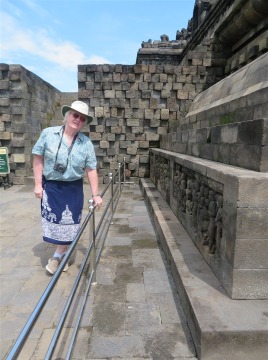
*** Are you taking a picture
of me as I was taking one of you?
*** I think this panel was when
young Buddha was approached by a blind man.
Buddha offered the man many
things, but the man said all he wanted was his sight.
Buddha gave his eyes to the
blind man. Of course, this was a test for Buddha.
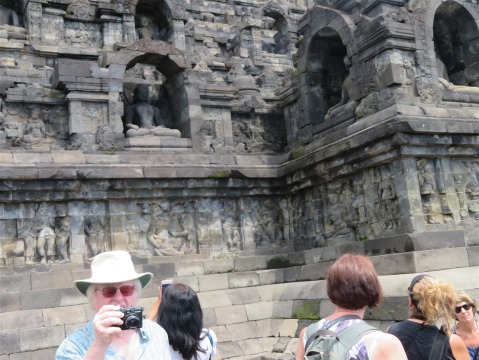 .
.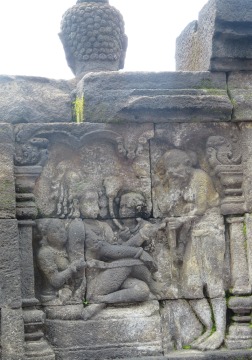
![]()
Beautiful relief depicting
the birth of Buddha ~ So much information; so little time!
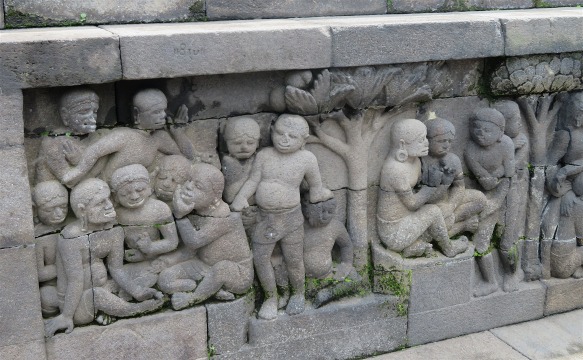
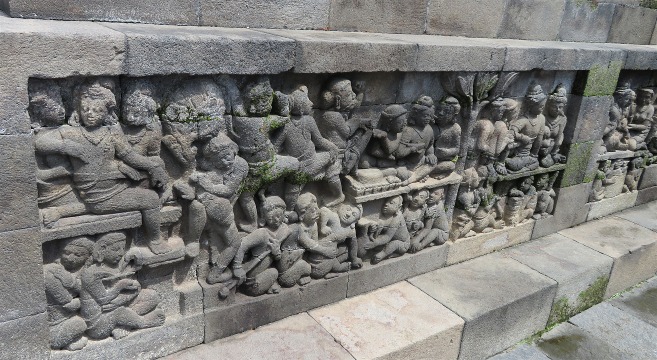
![]()
As with many of these historic
structures, there have been new drainage spouts installed,
and often times, cement has
been poured to form a stronger impervious foundation.
This helps to keep the pavers
in place and no more sagging due to poor drainage.


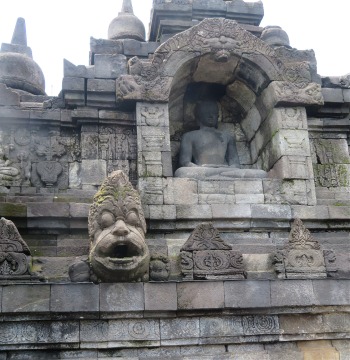 .
.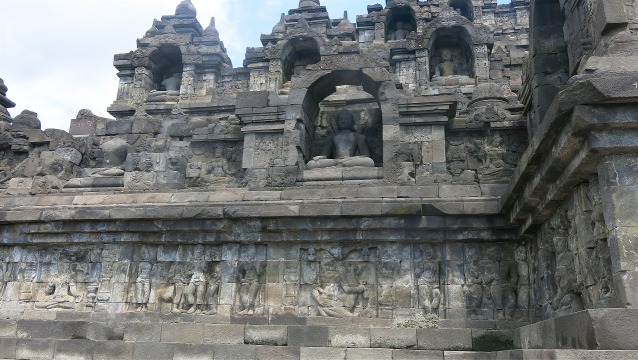
![]()
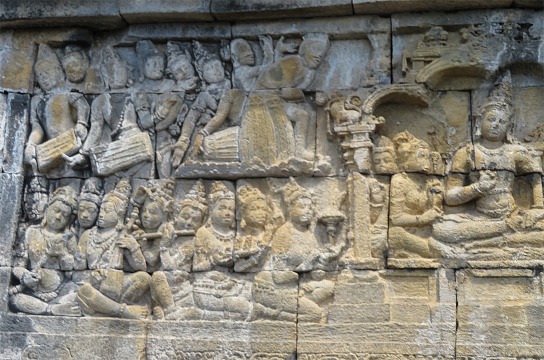 .
.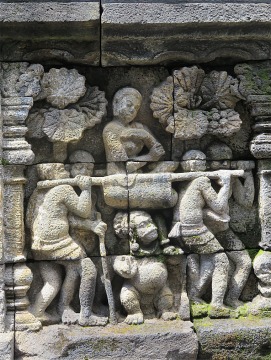
![]()
The ochre colour was put on
by the Dutch,
over the natural stone. Most
has worn off.
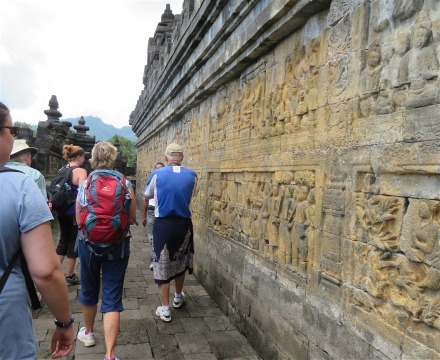
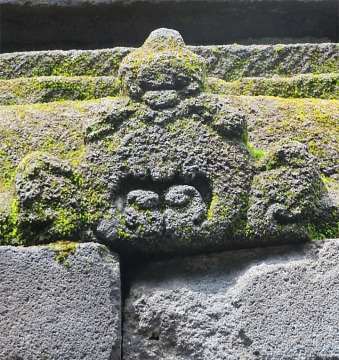
![]()
Hope this little seedling will
be transplanted before it causes damage.
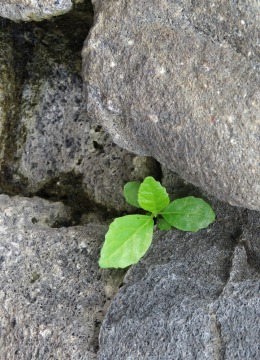 .
.
![]()
The top of the temple, no entry
for us mere mortals

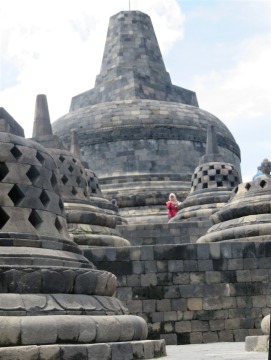
![]()
A view from above.
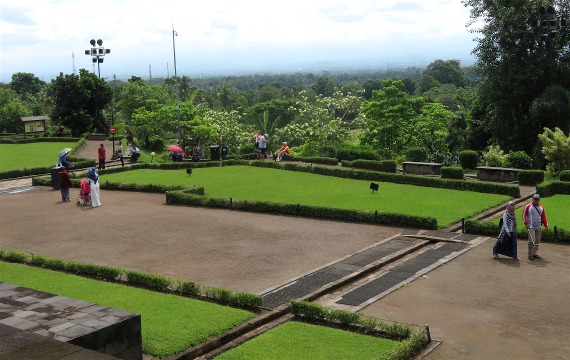 .
.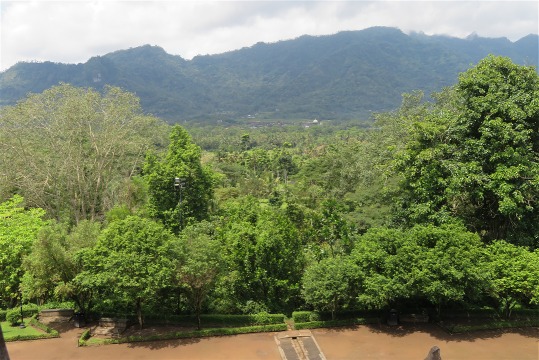
![]()
I think this was at the 9th
level? These domes are called "stupas". Inside each is a sitting Buddha
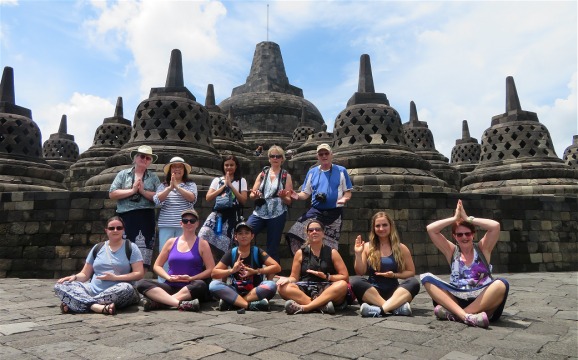

![]()
One of the stupas was open so
the Buddha is visible to visitors.
Others are enclosed so it's
hard to see the hand positions.
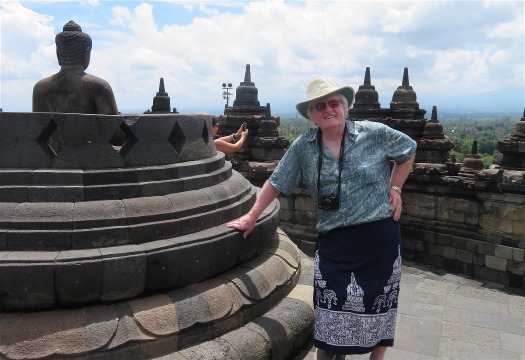 .
.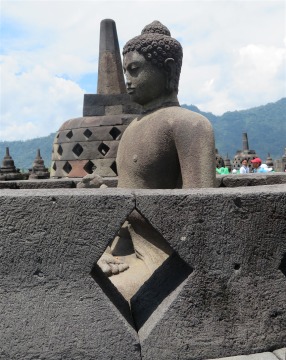 .
.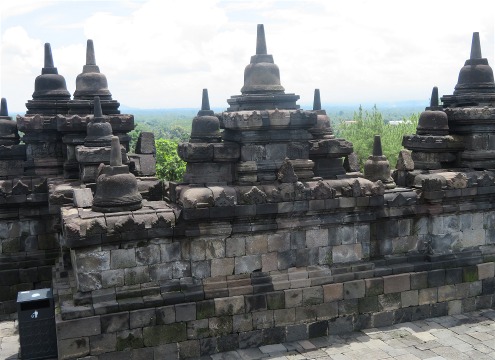
![]()
The swarm of young school girls.
We had fun trying to pronounce their names!
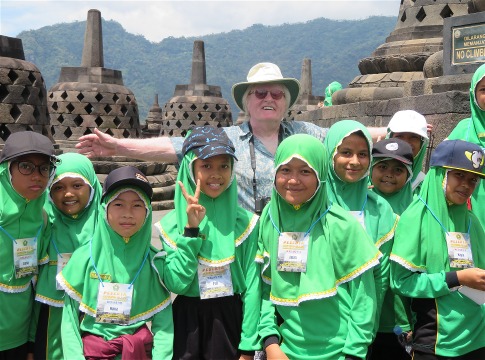
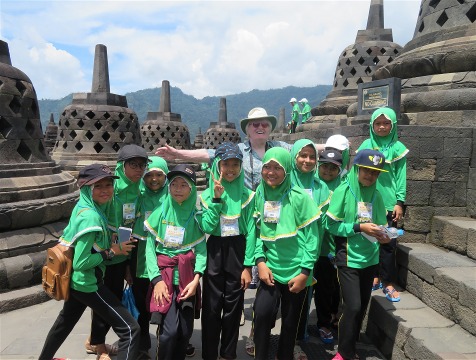
![]()
After the swarming... ~ What
goes up, must come down!
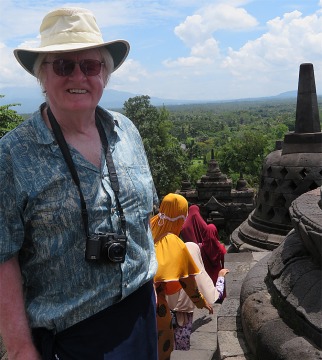 .
.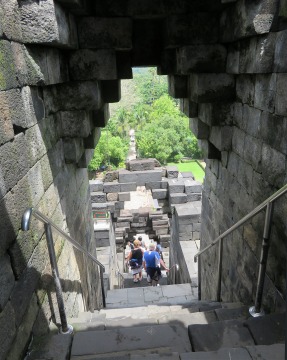
![]()
Made it... with sarong intact
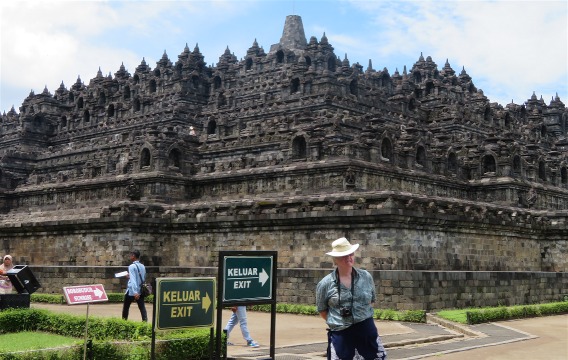
![]()
An almond tree! . . . and others
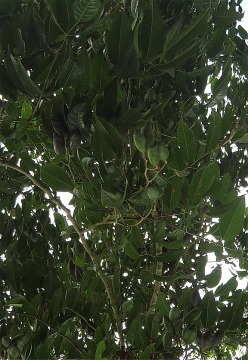
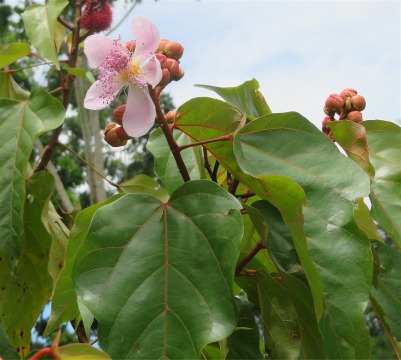
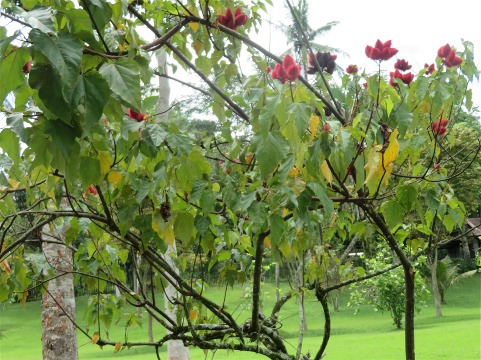

![]()
A Hobbit house?
Fellow traveller tried top crack
a fresh almond.
Being green and fresh off the
tree makes for hard work
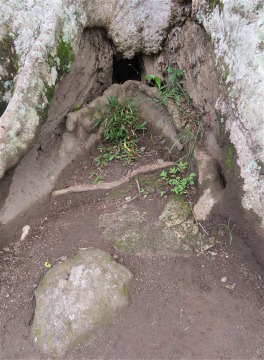 .
.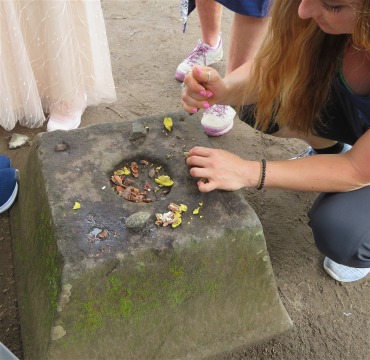
![]()
No criticism, please.
These animals looked well cared
for, and it provides employment for the mahout.
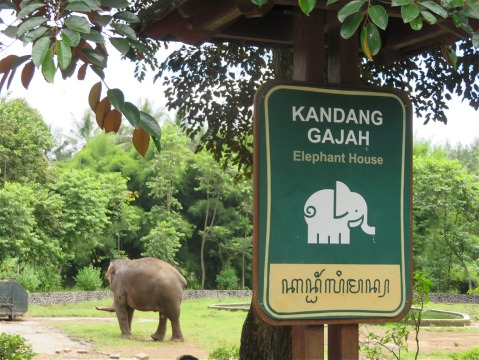
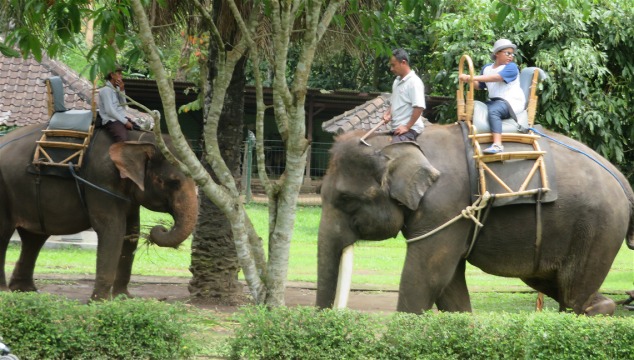
![]()
*** A Transformer?!
*** Owls on display...
***An elderly vendor.
Not sure what she's selling
but everyone has a "job"
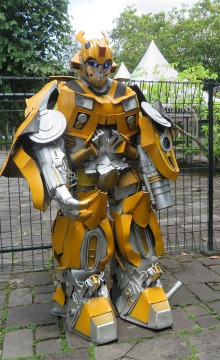
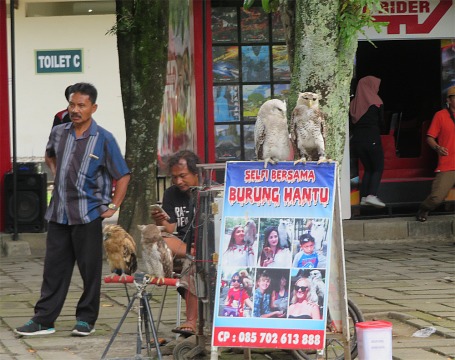
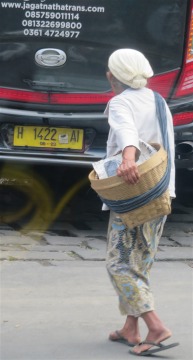
![]()
LUNCH TIME
Vera Hutasoit has been terrific
in introducing new fruit to some of our travellers.
These are rambutan, a fruit
similar to lychee.
Rambutan: s a medium-sized tropical
tree in the family Sapindaceae.
The name also refers to the
edible fruit produced by this tree.
The rambutan is native to the
Indonesian region and other regions of tropical Southeast Asia.
It is closely related to several
other edible tropical fruits including the lychee, longan, and mamoncillo.
It's a strange and yet pretty
fruit. The skin is thin, and a juicy flesh encases a seed.
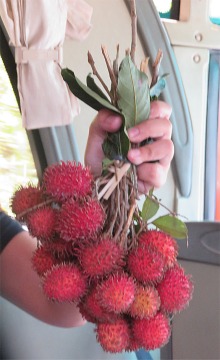
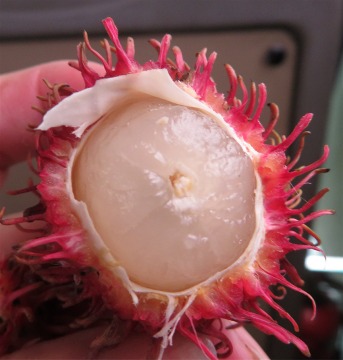
From the temple, we drove for
about 1.5 hours toward our next destination, a Hindu Temple.
Close to the area, we hopped
onto a tram and were taken into a "hidden restaurant" down by a river.
It was quite unique, especially
the furniture on display.
 .
.
![]()
![]()
![]()
![]()
JAVA CONTENTS
www.hillmanweb.com/indonesia/java
INDONESIA INTRO CONTENTS
www.hillmanweb.com/indonesia
![]()
Part of the
Hillman
Travel Adventures
Bill
and Sue-On Hillman